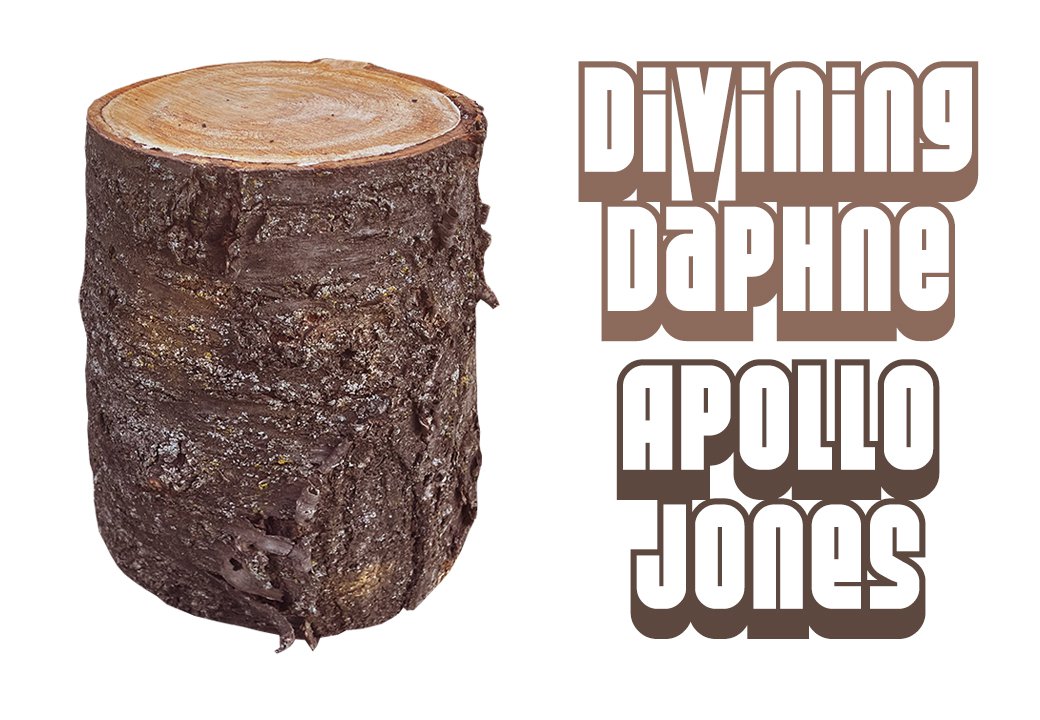Divining Daphne
Page featured image content

Page main body content
The Documentation Sculptures of Apollo Jones
April 1 -15, 2023
An Oregon native, Apollo Jones is perhaps best known for his work as a member of the Plank School, a movement dedicated almost exclusively to wood and its derivatives as their medium of expression. This exhibit highlights his 1975 series Divining Daphne, eleven figural sculptures representing the classical Greek nymph Daphne, her flight from danger, and self-transmogrification into a laurel tree to escape the unwanted advances of an amorous god.
“Tree rings not only tell you about the tree, they inform you of the environment from which it came. So too with the artist; their work is a stratified personal history chiseled and cut from time’s firmament.” – Apollo Jones
Artist Apollo Jones was born in Cape Perpetua, Oregon, on April 1, 1925. After exhibiting locally for several years, he relocated to NYC shortly after the end of WWII. Jones briefly shared a Soho loft with the alleged second cousin of noted Abstract Expressionist Willem de Kooning but was forcefully evicted after other tenants complained of excessive snoring and general hygiene issues. This proved fortuitous; shortly after this forceful ejection he fell in with a group of artists who would come to be known as the Plank School.
A short-lived but seminal movement that thrived as branch of seventies Pluralism, the Plank School’s contributions to Post-Modern sensibilities cannot be overstated. Their overarching theme incorporated wood and its derivatives as a launching point for all manner of artistic expression, from the utilitarian works of Jenny Haniver – known for her conglomerates of pine shavings – to Mark Smithson and his site-specific sculptures incorporating arranged stands of saplings. Their convoluted history is beyond the scope of this exhibit; we recommend Vonnegut’s 1982 “In the Thicket: The Plank School and its Aftermath” (ISBN 978-1794798939) for an excellent synopsis of their concerns and motives.
Jones’ participation in the group was not without its thorns. Other members were often at odds with his peculiar mannerisms. “He was forever throwing various lengths of timber about our shared studio,” Haniver related in an interview with the Times, “he said it was ‘to release the forms trapped within’. But honestly, I think he just enjoyed throwing wood around. Must have been a fetish thing? He beaned Mark [Smithson] square in the forehead on more than one occasion.” Despite numerous concussions and lacerations sustained by fellow artists, Jones’ work throughout the seventies reveals a master craftsman, forever branching out artistically.
Divining Daphne is a series of figural sculptures allegorically representing the classical Greek nymph Daphne, her flight from danger, and self-transmogrification into a laurel tree to escape the unwanted advances of an amorous god. Despite the artist’s vehement claims to the contrary, it is generally accepted by critics that the series is a thinly veiled timeline of Jones’ pining for noted art collector and socialite Peggy Guggenheim, who he never met. The artist cites Divining Daphne as one of the purest expressions of his style. “The inspiration for the series came from a near-fatal car crash in ‘69. Upon striking a tree I was thrown clear of the car via the windshield, landing safely in a ditch, my fall buffeted by a small stand of saplings. Probably spruce. It was in that moment I realized that trees had the power to give and to take life.” Jones related in an interview with the New Yorker.
Feared lost, the work was discovered intact in 2012 in a garage located in New Jersey. After extensive restoration this important grouping can for the first time in decades be viewed in its entirety. Critic Irving Sandler likened the work to “the incoherent ramblings of a person with a disturbingly acute wood fetish. Frankly I’m stumped by anyone who considers Mr. Jones’ work as having even the slightest aesthetic merit. Sickening.”
Arranged in a multi-level row, the free-standing figures suggest a simplified game of chess, kings and pawns alike stripped of their power by their linear arrangement. Sympathetically worked with a variety of tools, they are inscribed with cryptic characters and pictographs alluding to an ancient language that mirror the radiating rings of the once living wood.
On display for April Fool’s Day, 2023.
